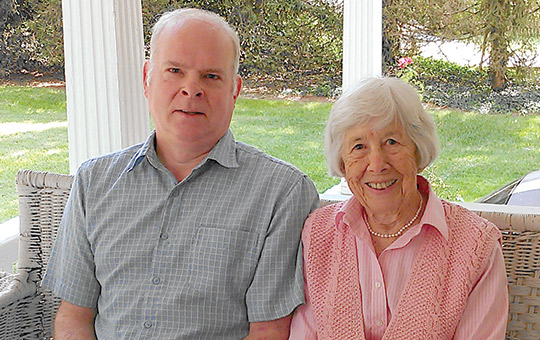Putting Her Best Foot Forward
Last year, moments before the first big show of their recent monthlong tour of Central Asia, the dancers of New York’s Seán Curran Company received an ominous warning.
“We were told that the future of modern performing arts in Turkmenistan was on our shoulders,” says Elizabeth Coker Girón (M.A. ’10), the company’s associate artistic director and a current TC doctoral student in Motor Learning and Control.
The caution, from U.S. embassy staff hosting the company in Ashgabat, Turkmenistan’s capital, was no exaggeration.
In 2001, the country’s eccentric dictator, Saparmurat Niyazov, had banned ballet, opera and other arts deemed inconsistent with national values. Though Niyazov died in 2006, there had not been a single modern dance performance in the country prior to the Seán Curran Company’s State Department–sponsored tour.
Raising the stakes further, the current president would be watching the show via a live feed. A massive portrait of him would hang behind the dancers as they performed.
“Of course, that wasn’t in our stage set!” says Girón.
Yet despite the pressure and the odd setting, the performance turned out a greater success than Girón had allowed herself to hope for.
“After the show people were screaming and crying,” she says. “They were asking for autographs. People were asking us to sign their bodies!”
The response, from a public starved for new performance, was testament to the power of dance to spark emotions. It underscored the ties between movement and imagination – a relationship that Girón explores as both a dancer and a scientist.
In Turkmenistan, Kazakhstan and Kyrgyzstan, the Seán Curran Company faced an arduous travel schedule and poor working conditions. Theaters were old, and some stages were even pocked with holes. One dancer broke his foot in the final performance. Yet these trials only fanned the group’s creative spark.
In Kyrgyzstan, for instance, the company met a local troupe who gave them a stirring performance, accompanied by traditional instruments, that moved them to tears – and to start planning a future collaboration between the two groups.
“This kind of tour is what makes us work,” Girón says. She cites the great German choreographer Pina Bausch, who would sketch new pieces sparked by locations where her company toured. “It’s the most inspiring experience.”
At TC, Girón’s doctoral research in motor learning concerns another way in which the imagination shapes movement and dance – this time at the microscopic level of motor neurons.
Working with Assistant Professor of Movement Sciences and Learning Tara McIsaac, Girón studies motor imagery – the process through which humans visualize themselves making a movement without actually making it. It’s an important subject in sports research, Girón says, with relevance to dance as well.
“I’m interested in how motor imagery changes the way people actually move,” she says.
While many of her colleagues form their research questions by working with clinical populations, Girón says she finds her ideas in the studio, interviewing numerous dancers to better understand how motor imagery feeds back into performance in the dance setting.
“Dancers are so smart,” she says. “They have a very systematic way of thinking. I think it comes from the way they are trained.”
For Girón, who once thought she’d become a physical therapist, the emerging field of dance science is allowing her to fulfill her dream: “I get to be an academic and still be in the studio.”
Published Friday, Dec. 7, 2012
